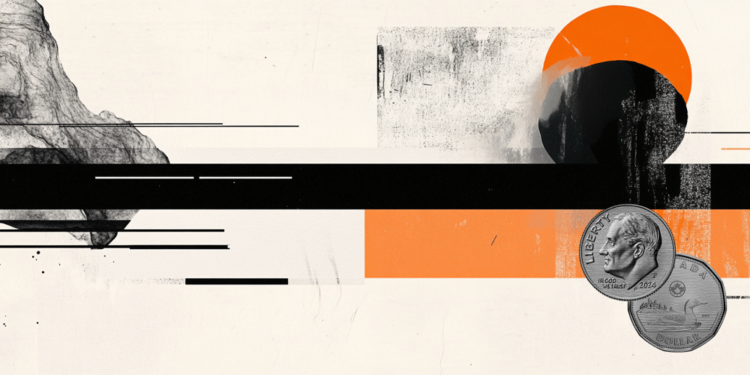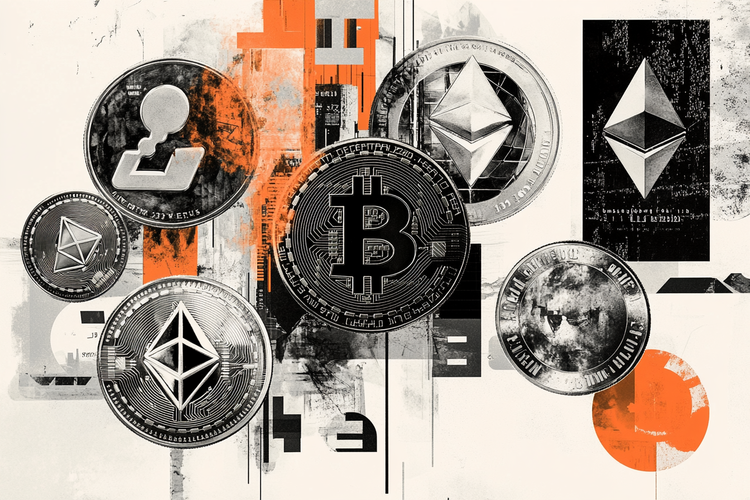- Indian Rupee recovers some lost ground on Thursday amid the weaker USD.
- India’s HSBC Service PMI improved to 61.2 in March against 60.6 prior, stronger than estimated.
- The downbeat US data and dovish comments from Fed officials exert some selling pressure on the USD.
- The US February Goods Trade Balance and weekly Initial Jobless Claims are due on Thursday.
Indian Rupee (INR) rebounds on Thursday on the softer US Dollar (USD). The INR attracts some buyers after India’s Service PMI report. The nation’s HSBC Service PMI came in better than market expectations, rising to 61.2 in March from 60.6 in February. Additionally, the weaker-than-expected US ISM Services PMI data for March and the dovish remarks from the Federal Reserve (Fed) remain to weigh on the Greenback. Nonetheless, the INR’s upside might be capped by the rise in crude oil prices to their highest levels since October amid the ongoing geopolitical tensions in the Middle East, along with higher US Treasury bond yields.
Investors will monitor the US February Goods Trade Balance and weekly Initial Jobless Claims on Thursday. On Friday, the US employment data, including Nonfarm Payrolls (NFP), Unemployment Rate, and Average Hourly Earnings for March, will be closely watched. On the Indian docket, the RBI interest rate decision will take center stage on Friday. The Indian central bank is likely to keep its key repo rate steady at 6.50% at its April meeting and maintain its stance of withdrawal of accommodation, according to a majority of analysts.
Daily Digest Market Movers: Indian Rupee remains strong amid global headwinds
- Citing six brokers, Reuters reported the RBI’s soon-to-be-implemented regulation saying exchange-traded rupee derivative transactions can be used only for hedging would cause volumes to plunge more than 80%.
- The World Bank forecasts the Indian economy to grow by 7.5% in 2024, revising its previous forecast by 1.2%.
- The US Services PMI eased to 51.4 in March from 52.6 in February, weaker than the estimation of 52.7, according to the Institute for Supply Management (ISM). A measure of prices paid dropped to a four-year low, arriving at 53.4 versus 58.6 prior.
- Private sector employment in the US rose by 184K in March from the 155K increase (revised from 140K) in February, above the market consensus of 148K, Automatic Data Processing (ADP) showed.
- Fed Chairman Jerome Powell emphasized that he doesn’t expect it will be appropriate to lower the policy rate until inflation is moving sustainably down toward the 2% target, keeping the timing of potential interest rate cuts uncertain.
- Fed Governor Adriana Kugler said on Wednesday that she believes inflation will continue to fall this year and pave the way for the central bank to cut interest rates.
- Atlanta Fed President Raphael Bostic stated that the central bank should not cut its benchmark interest rate until the end of this year, as he maintained his view that the Fed should cut the rate only once over the course of 2024.
Technical analysis: USD/INR maintains bullish stance in the longer term
The Indian Rupee trades softer on the day. USD/INR keeps the bullish vibe unchanged in the long term since the pair has risen above a nearly four-month-old descending trend channel since last week.
In the near term, USD/INR holds above the key 100-day Exponential Moving Average (EMA) on the daily timeframe. The upward momentum is confirmed by the 14-day Relative Strength Index, which stands at around 68.75 in bullish territory and supports buyers for the time being.
A break above a high of April 3 at 83.55 could spur a move to the next upside targets at an all-time high of 83.70 en route to the 84.00 psychological level. On the other hand, the first support level is seen near a high of March 21 at 83.20. A breach of this level could see a drop to the 83.00-83.50 region (round mark, the 100-day EMA), followed by a low of March 14 at 82.80.
US Dollar price in the last 7 days
The table below shows the percentage change of US Dollar (USD) against listed major currencies in the last 7 days. US Dollar was the strongest against the Japanese Yen.
| USD | EUR | GBP | CAD | AUD | JPY | NZD | CHF | |
| USD | -0.27% | -0.30% | -0.55% | -0.97% | 0.27% | -0.61% | -0.24% | |
| EUR | 0.27% | -0.01% | -0.26% | -0.68% | 0.58% | -0.33% | 0.04% | |
| GBP | 0.29% | 0.02% | -0.25% | -0.67% | 0.58% | -0.31% | 0.05% | |
| CAD | 0.54% | 0.26% | 0.25% | -0.42% | 0.80% | -0.06% | 0.29% | |
| AUD | 0.96% | 0.68% | 0.67% | 0.42% | 1.26% | 0.36% | 0.72% | |
| JPY | -0.27% | -0.53% | -0.58% | -0.80% | -1.22% | -0.88% | -0.54% | |
| NZD | 0.59% | 0.33% | 0.31% | 0.06% | -0.36% | 0.90% | 0.36% | |
| CHF | 0.22% | -0.05% | -0.07% | -0.31% | -0.71% | 0.52% | -0.38% |
The heat map shows percentage changes of major currencies against each other. The base currency is picked from the left column, while the quote currency is picked from the top row. For example, if you pick the Euro from the left column and move along the horizontal line to the Japanese Yen, the percentage change displayed in the box will represent EUR (base)/JPY (quote).
RBI FAQs
The role of the Reserve Bank of India (RBI), in its own words, is ‘..to maintain price stability while keeping in mind the objective of growth.” This involves maintaining the inflation rate at a stable 4% level primarily using the tool of interest rates. The RBI also maintains the exchange rate at a level that will not cause excess volatility and problems for exporters and importers, since India’s economy is heavily reliant on foreign trade, especially Oil.
The RBI formally meets at six bi-monthly meetings a year to discuss its monetary policy and, if necessary, adjust interest rates. When inflation is too high (above its 4% target), the RBI will normally raise interest rates to deter borrowing and spending, which can support the Rupee (INR). If inflation falls too far below target, the RBI might cut rates to encourage more lending, which can be negative for INR.
Due to the importance of trade to the economy, the Reserve Bank of India (RBI) actively intervenes in FX markets to maintain the exchange rate within a limited range. It does this to ensure Indian importers and exporters are not exposed to unnecessary currency risk during periods of FX volatility. The RBI buys and sells Rupees in the spot market at key levels, and uses derivatives to hedge its positions.

























